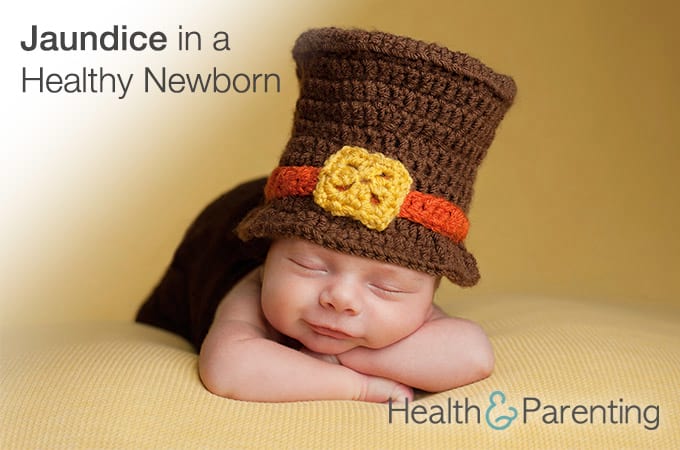You have just delivered your beautiful baby, and he is perfect in every way. So it may come as a surprise if your healthcare provider tells you your baby has jaundice. But jaundice does not mean anything is seriously wrong. In fact, newborn jaundice is so common, it occurs in about 60 percent of babies.
What is Jaundice?
Being told your newborn has even a minor medical condition can stress out any new parent. But understanding why jaundice occurs and how it is treated can help ease worries.
Jaundice is caused by elevated levels of an enzyme called bilirubin. Your body produces bilirubin as a result of the breakdown of red blood cells. Normally, bilirubin is eliminated by the liver. But in some cases, your baby’s liver is still learning how to do the job. Bilirubin may be produced faster than your baby’s still maturing liver can eliminate it. The enzyme can build up, and a few days after birth, your baby may develop jaundice.
Is Jaundice Serious?
In the vast majority of instances, newborn jaundice is nothing to worry about and resolves within a couple of weeks. In rare cases, levels of bilirubin can become dangerously high and lead to a complication called kernicterus.
Kernicterus can cause hearing loss, delayed development and vision problems. The good news is babies with high levels of bilirubin are usually treated before the condition becomes severe.
It’s normal to wonder if something you did or did not do during pregnancy led to your baby developing jaundice. Rest assured, there is nothing you could have done to prevent the condition.
Spotting Jaundice
If you had a hospital birth, your baby’s bilirubin levels were probably checked shortly after you delivered. But it’s important to understand, bilirubin levels often peak around five days after birth, so you may be discharged before symptoms develop.
Many pediatricians recommend a well-baby visit a couple of days after you and your baby are discharged from the hospital. At your first well-baby visit, your baby’s bilirubin levels may also be checked.
Parents may also be the first ones to recognize jaundice in their newborn. You’re probably spending a lot of time gazing at your little one and may be the first to notice a change in her coloring. A baby with jaundice will develop a yellow discoloration of their skin. At first it may just involve the face, but the yellowing may spread to the chest, stomach and legs. In some cases, the whites of the eyes will also become yellow.
If you think your baby may have jaundice, call your pediatrician. You can’t gauge how high your baby’s bilirubin is just by looking at her, so she needs to be evaluated by her pediatrician.
Treating Jaundice
In many cases, babies do not need treatment for jaundice. They’re just monitored to make sure levels decrease on their own. If treatment is needed, phototherapy usually is effective. Phototherapy involves placing your baby under special lights called bili lights. The light transforms bilirubin into a form, which can be eliminated easily through urine. Phototherapy is considered safe and usually does the trick to reducing bilirubin levels.
Written by Mary Ann DePietro @ writerlady34
This information is not intended to replace the advice of a trained medical doctor. Health & Parenting Ltd disclaims any liability for the decisions you make based on this information, which is provided to you on a general information basis only and not as a substitute for personalized medical advice. All contents copyright © Health & Parenting Ltd 2016. All rights reserved.










